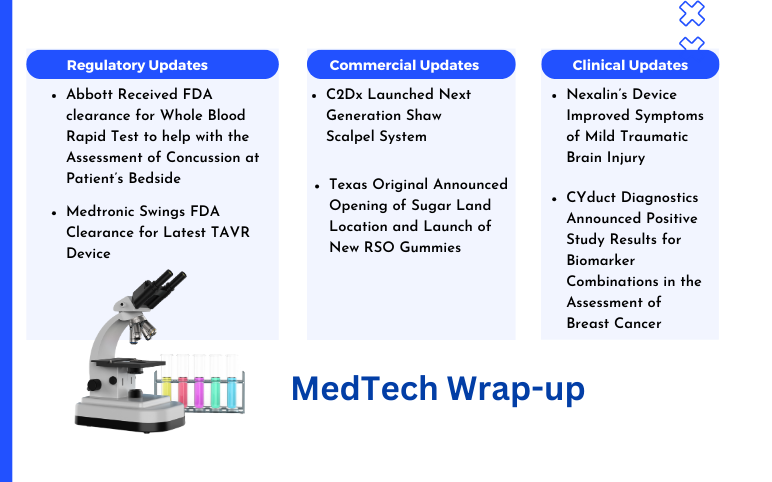Table of Contents
Technological advancement is bringing in a new frontier in the healthcare segment with innovative tools and resourceful applications. With each passing day, it unlocks new mysteries and scales greater heights toward solving several underlying challenges. Now moving forward, how fascinating it will be if someone tells you that we can control machines using your brain or neural activity alone. Such applications are in the largely experimental stage and can be practically possible with an evolving technology called the Brain-Computer Interface (BCI).
Developed with the purpose of providing an assistive, adaptive, and rehabilitative application, a Brain-Computer Interface system allows a human brain and an external device to exchange signals or talk to one another. BCI make it possible for humans to control machines without the physical constraints or movement of the body directly. Globally, several studies are going on to explore the potential of Brain-computer Interfacing applications as a reliable piece of technology in the fields of healthcare and medical sciences. Brain-Computer Interfaces have made significant contributions to various fields of study. Apart form healthcare, they can be employed in the fields of neuroergonomics and smart environments, neuromarketing, and advertising, education, games and entertainment, and security. Brain Machine Interface also allows for excellent collaboration between the Internet of Things and BMI technologies, resulting in smart environments such as smart homes, transportation, and workplaces.
Brain-computer Interfacing Market is registering immense growth as several prominent companies, and research organizations are actively engaged in the segment. It is set to revolutionize the healthcare segment with its promising application and the lives of patients with certain neurodegenerative disorders and physical disabilities.
What is a Brain-Computer Interface (BCI), and How Does it Work?
The concept came to light in 1924 when Hans Berger discovered the electrical activity of the brain. During that time, several development experiments were going on related to the use of electroencephalography (EEG). However, the actual and practical research on the Brain-Computer Interface applications began in the 1970s in California (UCLA). Experiments were performed on animals to establish a new and direct communication path between external environments (or devices) and the brain. Later on, in 1973 Jacques Vidal published a paper titled: “Toward Direct Brain-Computer Communications”. During the 1969 and 1970, very first tests with the BCI development were carried out on monkeys and in 90s, attempts with human beings were performed. In 2000, Jonathan Wolpaw gave a clear explianant and first full definition of the BCI.
Our brain has nearly 100 billion neural connections and can process billions of bits of information per second. When a person is doing some activities, the neurons in the brain are in action. BCI do not use the brain’s normal output pathways of peripheral nerves and muscles. In fact, various computer chips are programmed in such a way that they convert these neural signals into action. For Brain-computer Interfacing to work, the BCI and the user must work in sync with each other. For efficient functioning of the BCI, the user needs to undergone training to generate brain signals that encode intention. Similarly, BCI must decode the signals and translate them into meaningful commands to act on an output device to accomplish the user’s intention.
A Brain-Computer Interface system consists of various components. To enhance the capabilities, some essential and extra components can be added to extend the system’s functionality. The system performs multiple functions, such as a signal or data acquisition, and operational activities, such as extraction, feature translation, and generating output. All the components work together by different protocols.
Brain-Computer Interface (BCI) holds immense beneficial potential for people with disabilities or paralysis to regain control of their limbs. It can help them to express their thoughts, write text using a cursor, and spell on a computer screen, among others. Not just disability, it can also enhance the national defense capabilities of a country, where a soldier can communicate directly with machines. With the help of a Brain-Computer Interface, a soldier can control a drone swarm.
Applications of Brain-computer Interfacing in Healthcare
The healthcare field has a wide range of applications that could benefit from brain signals in all phases, including prevention, detection, diagnosis, rehabilitation, and restoration. Traffic accidents are the leading cause of death or serious injury. Analyzing their causes for future prevention has been a focus of research in various fields. Moreover, BCI systems’ mental state monitoring function has also helped predict and detect health issues such as abnormal brain structure (such as brain tumor), seizure disorder (such as epilepsy), sleep disorder (such as narcolepsy), and brain swelling (such as encephalitis).
BCI allows for communication between the brain and external devices. The possibilities for this technology are limitless and exciting.
How Can a BCI Overcome the Challenges of People With Neurological Disorders?
The main aim of BCI is to restore or replace the various valuable functions of people who are disabled by neuromuscular disorders like amyotrophic lateral sclerosis, stroke, cerebral palsy, or spinal cord injury. Similarly, it brings more enriching experiences for paralyzed individuals who have lost the ability to communicate.
As per the WHO, a significant proportion of people are affected by diseases and disorders that hamper their physical activity. Similarly, most people are unable to get the desired treatment. The primary motive behind the development of the Brain-Computer Interface (BCI) is to provide a resource tool to manage daily activity for people who are disabled by neuromuscular disorders like stroke, cerebral palsy, multiple sclerosis, amyotrophic lateral sclerosis, or spinal cord injury. As per estimates, every year, around the world, between 250,000 and 500,000 people suffer a spinal cord injury (SCI), and it is associated with lower rates of economic participation and carries a substantial societal burden. Similarly, annually, around 15 million people worldwide suffer a stroke and nearly 5 million die, and another 5 million are left permanently disabled, placing a burden on family and community. Amyotrophic lateral sclerosis (ALS) is a major neurodegenerative disease that affects nerve cells in the brain and spinal cord. The worldwide average incidence rate of ALS is estimated at about one in 50,000 people per year, which equates to about 5,760 to 6,400 new diagnoses per year.
The neurological disorders raises several challenges for the affected people to carry out their daily tasks. However, the developments in the Brain-Computer Interfaces (BCI) as an assistive communication tools present exciting opportunity for these patients to express themselves and interact with the world.
What are the Major Methods or Types of Brain-Computer Interface?
Brain-Computer Interfaces work on a connection between the brain and an external device like a computer, robotic limb, or drone, which the person can control simply by thinking. Brain-Computer Interfaces enable users to act on objects by using brain signals rather than muscles. The BCI system acquires brain signals, analyzes them, and translates them into commands that are relayed to an output device to carry out the desired activity. Some of the major methods or types of Invasive Brain-Computer Interfaces include:
Non-Invasive Brain-Computer Interface
A Non-invasive Brain-Computer Interface works on the principles of Electroencephalography (EEG) and can work without intrusive procedures. EEG is used to monitor and analyze the brain wave activity. In EEG, multiple electrodes are attached to the patient’s scalp, touching the front left upper part of the head (and just above the eyebrows). The user or the patient doesn’t require surgery. It measures the voltage fluctuations in the brain caused by the ionic current within the brain’s neurons. An EEG records the spontaneous electrical activity of the brain over a certain period. There are a few misconceptions about using an electroencephalogram machine and Brain-computer Interfacing. An electroencephalogram machine alone is not a BCI because it only records brain signals. EEG does not generate an output signal that acts on some external gadget or devices.
The non-invasive Brain-Computer Interface has several advantages as it is much cheaper, easy to use and work, and portable than the invasive Brain-Computer Interface. There is no possibility of scar tissue or tissue damage in the human brain, and hence relatively much safer. People from diverse backgrounds can work on non-invasive BCI, and it doesn’t require the guidance of medical practitioners. The noninvasive BCI has a drawback as it has a lower spatial resolution and captures a weaker signals because of the obstruction of the skull. Similarly, most researches are currently focusing on the non-invasive Brain-Computer Interface, and the segment is expected to observe significant growth in the coming years.
Partially Invasive Brain-Computer Interface
In Partially Invasive Brain-Computer Interface, some form of brain surgery is involved. Electrodes are attached to the brain’s exposed surface and are partially inside the head. The attached electrodes monitor electrical activity from the cortex surface of the brain in ECoG Electrocorticography.
Invasive Brain-Computer Interface
In invasive Brain-Computer Interfaces (BCI), direct communication between the brain and a computer or another external device is developed as inculcated precisely inside the human brain. The invasive BCI has immense benefits as it can record the activity of single neurons with the highest signal quality. The Brain-Computer Interfaces have several clinical long-term applications as they can allow severely paralyzed individuals to regain some autonomy and increase their quality of life. In the coming years, further detailed analysis of the neuronal recordings from the human brain can provide valuable insights into the living human brain. The invasive Brain-Computer Interface has limitations as it always requires a medical professional guidance. The patient or the user needs to undergo surgery to implant the sensor or the electrode in the brain.
Benefits and Challenges of Brain-Computer Interfacing
The rise in the adoption of non-invasive Brain-Computer Interface systems, which are used to control robotic arms that benefit paralyzed people in the healthcare industry, is attributed to the segment’s growth. However, the invasive segment is expected to grow the most in the coming years because it is implanted in the brain and has the highest quality signals. These devices are used to provide functionality to people who are paralyzed. Invasive BCI are also used to restore vision by connecting the brain to external cameras, as well as to restore limb use by using brain-controlled robotic arms and legs. The advantages of invasive BCI are expected to drive demand in the coming years. Some of the benefits of Brain-Computer Interfacing include
- Converts previously passive devices into ‘smart’ and active ones. (For example, prosthetics)
- Enables communication using Sensorimotor rhythms (SMRs).
- Helps in regaining motor control in paralyzed patients
- Assists in the military through telepresence that can help detect and combat suspicious activity.
- Use a BCI-enabled vehicle to avoid accidents.
- Train elderly people’s motor and cognitive abilities to counteract the effects of aging.
- BCI systems are used in neurorehabilitation to help people whose neuromuscular function has been impaired by trauma or disease relearn useful motor functions.
- Non-invasive BCI (wearables): The sensors are placed on the scalp (on the head) to measure the electrical potentials produced by the brain. Because of the obstruction of the skull, these flexible devices can only capture “weaker” human brain signals.
However, there are some challenges with Brain-Computer Interfacing technology. There are some major areas of emphasis that will determine the success and growth of this technology in the future.
- This technology requires signal acquisition hardware that is cost-effective, portable, durable, economically feasible, and easy to use.
- This technology requires signal acquisition hardware that is cost-effective, portable, durable, economically feasible, and easy to use. It should also be usable by everyone.
- This technology will be accepted by the general public for daily use only when it achieves the reliability of natural muscle function.
Additionally, developing a communication interface based on brain signals has been difficult. They are classified as technical and usability. The technical challenges concern system obstacles, particularly those related to EEG feature characteristics. The limitations affecting the level of human acceptance are described as usability challenges.
Usability Challenges
They express the constraints that users face when implementing BCI technology. They include issues concerning the training process required for class discrimination. The information transfer rate (ITR) is a system evaluation metric that considers both performance and acceptance.
Technical Challenges
They are issues related to the recorded electrophysiological properties of brain signals, such as non-linearity, non-stationarity, noise, small training sets, and the accompanying dimensionality curse.
Leading Players in the Brain-computer Interfacing Market
Brain-Computer Interface (BCI) technology is gaining popularity in medical applications. Extensive BCI research is being conducted in order to develop devices that will assist people with disabilities, particularly those suffering from neurological and neuromuscular conditions such as spinal cord injury, brain strokes, and amyotrophic lateral sclerosis.

Several leading tech giants including Advanced Brain Monitoring, Inc., Cadwell Industries, Inc., Cortech Solutions, Inc., Emotiv, G.Tec Medical Engineering Gmbh, Integra Lifesciences, Natus Medical Incorporated, Neurosky, Nihon Kohden Corporation, Openbci, Medtronic, Compumedics Neuroscan, Brain Products GmbH, Interaxon, Inc., ANT Neuro, Neuroelectrics, Ripple Neuro, NIRx Medical Technologies, LLC, CGX, A Cognionics Company, NextMind SAS, Blackrock Neurotech, Cadwell Industries Inc., and others are currently operating in the Brain-Computer Interfacing Market.
Brain-computer Interfacing Market Dynamics
Continuous advances in computational and sensor technology are expected to drive the Brain-Computer Interfacing market. Furthermore, ongoing research to develop treatments for fatal conditions such as brain disorders and injuries, sleep disorders, and cerebrovascular diseases is expected to drive Brain-Computer Interfacing market growth. Moreover, clinical trials, research institutes, and government bodies have extended their assistance in the form of investments, funds, and grants, stimulating research activities to increase the use of Brain-Computer Interfaces. The use of Brain-Computer Interfaces is also expected to increase as the demand for biocompatible materials rises.
Additionally, virtual gaming has opened up new possibilities for mind-controlled headsets and gadgets, which is fueling adoption even further. Manufacturers are concentrating on the creation of BCI-enabled video games. Brain-Computer Interface systems are well suited for the precise and dependable control of smart home applications. To carry out various activities, home control systems use P300-based technology—an event-related potential component that aids in decision-making. These activities include opening and closing doors and windows, turning on and off lights, controlling the TV and music systems, and operating a video camera at the entrance.
Another growth driver for the Brain-Computer Interfacing market is the growing global geriatric population. The growing geriatric population is expected to increase susceptibility to chronic conditions such as diabetes, cardiovascular disease, and sleep disorders, necessitating the use of BCI technology to promote a healthier lifestyle.
However, a lack of skilled technicians to handle these complex devices is a factor limiting the Brain-Computer Interfacing market growth. Moreover, personhood, stigma, autonomy, privacy, research ethics, safety, responsibility, and justice are some of the ethical issues that have arisen as a result of the implementation of BCI technologies that will further hinder the Brain-Computer Interfacing market growth.
Brain-computer Interfacing – Future Perspective
BCI can have vast applications in the healthcare segment and, as of now, is largely in the experimental stage. Over the past few years, the Brain-Computer Interface (BCI) Market has registered several monumental clinical and commercial development milestones. Globally, several key companies are working to introduce some proposed models of BCI in the coming years, which can immensely benefit many people with disabilities or paralysis. However, It will be exciting to see how the segment will evolve and grow in the future and to what extent it will transform and overcome existing challenges in healthcare market.









-Agonist.png)


